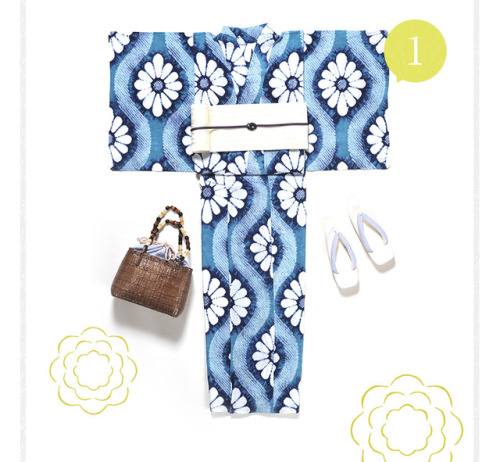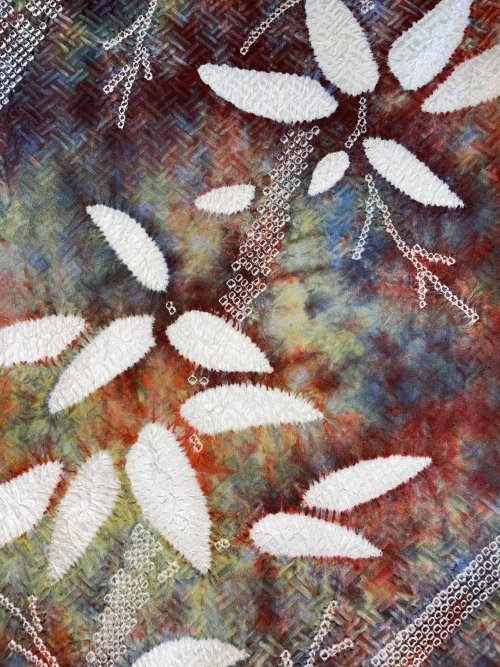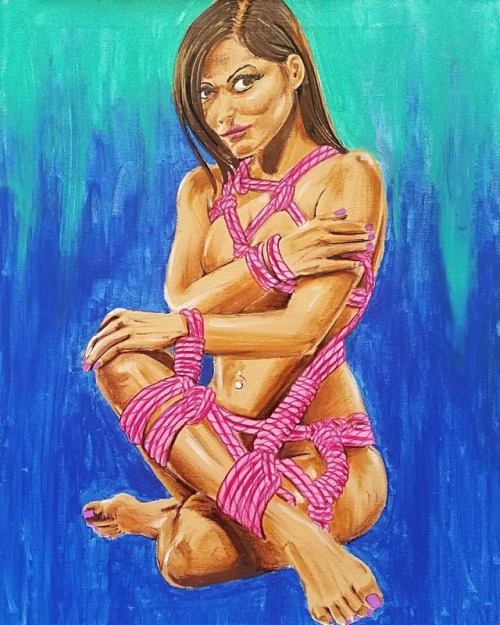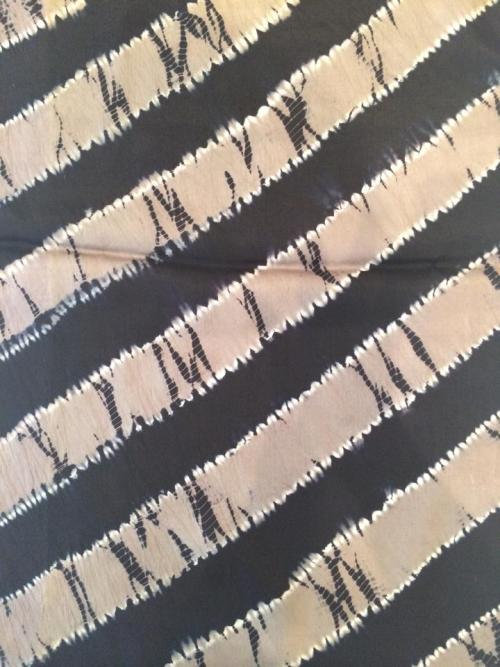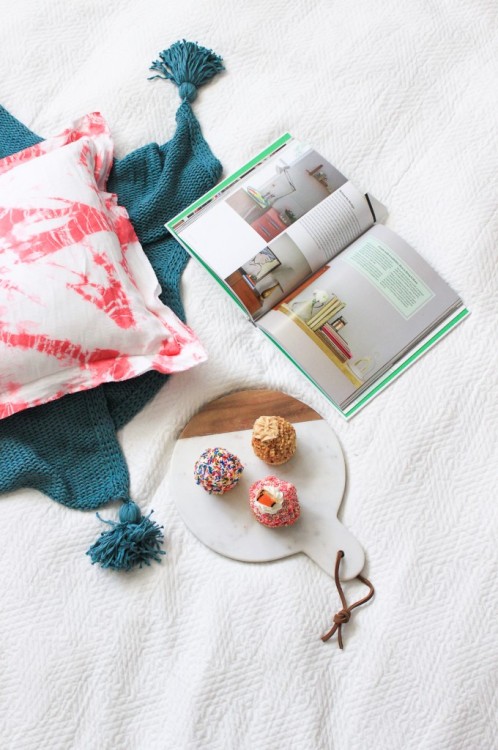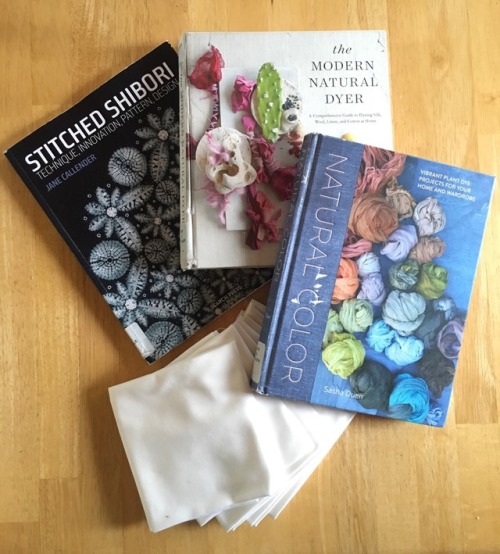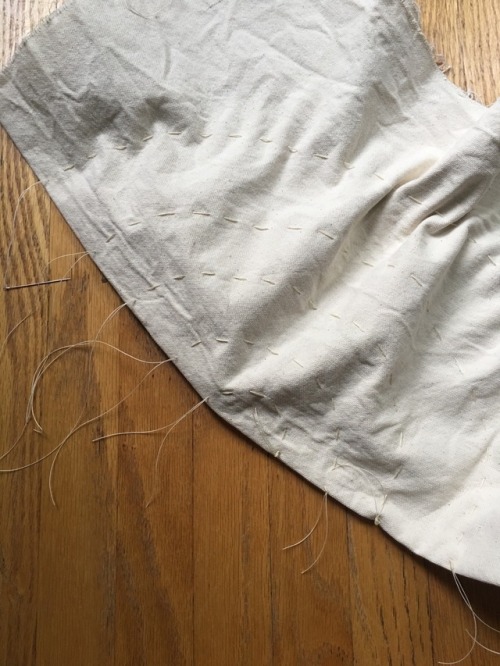#shibori
Two yukata coordinations from Tsuyukusa!
Look at the careful way the straps of the geta are coordinated with the ‘highlight’ color of the yukata– especially in the second yukata, they pick up the background teal tone which is also pulled out into the obi color. In the top yukata, white is used as a highlight color against a bold teal and extremely deep indigo color– the flowers seem to glow. They might be chrysanthemums or a stylized daisy.
The stark, blazing white obi lends adult flair to this large-patterned piece. You can see more of it here.
The second one is a bit more festive, utilizing a marbled and chaotic jumble of violet and teal but with a carefully structured pattern of asa-no-ha. The large white triangles of the motif give us a bit of a break from the crazy color scheme. Look at it up close here.
Post link
Beautiful handmade Arimatsu Shibori yukata from Hong Kong Madam. All shibori pieces are one of a kind and very expensive. This gorgeous blue and violet yukata is paired with a soft white obi with printed obijime to show off the craft of the tie dye to its fullest effect. Different sizes and patterns of dyeing are combined here to make flowers, water waves and a pattern of soft squares.
The overall effect is of a cold river with violet flowers falling across it, a wonderful image on a hot summer day.
This yukata currently costs 45,278 yen (on sale!) but many shibori yukata are made-to-order from the dyed cloth, so as not to waste any when cutting!
Post link

I think it’s pretty dope to be able to walk around in something that a friend of mine custom made from scratch. Thanks Ibe !
Best tie and dye work for this shibori kimono depicting sasa (bamboo) over a faint lattice ground (the color play must truly be something irl!). OP is a genius because they paired it with this nice ryuusui (running water) haori, which should not work considering the dyeing styles differences, yet it WORKS!
Post link
Had alot of fun painting these
.
.
.
.
.
#nativetouch #artofinstagram #shibori #art #ropeplay #azart #bondageart #acylicpainting #rope #pink #nativeartist #tucsonarizona (at Tucson, Arizona)
https://www.instagram.com/p/B0hcBCZhZtX/?igshid=1rto3qgivhzwy
Post link
Not finished with this one,more work to be done with it
.
.
.
.
.
#nativetouch #artofinstagram #shibori #ropeplay #painting #acylicpainting #azart #tucsonarizona #art #bondageart #nativeartist #rope #tiedup (at Tucson, Arizona)
https://www.instagram.com/p/B0hbhqLB1-n/?igshid=1a9e4lzlne0vh
Post link
Some fun paintings I just finished
.
.
.
.
.
.
#nativetouch #artofinstagram #shibori #art #ropeplay #azart #bondageart #ropeart #painting #acylicpainting #femalefigure #tucsonarizona (at Tucson, Arizona)
https://www.instagram.com/p/B0hamWoBL1H/?igshid=1mzxx5tvfq7qi
Post link
One of the textile pieces from our ‘From Blue to New’ exhibit, is a great example of the shibori dyeing technique. Indigo and shibori dyes and patterns are turning out to be very popular this season. We found this beautiful maxi dress, perfect for summer, that shows off just how chic this technique can be!
Post link
Pink Shibori Pillow|The Crafted Life
There’s a lady at the markets I sell at who makes amazing Shibori dyed pillows, blankets, book covers, etc and I’ve always wanted to try it myself. I’m a little wary of dye - it seems overly complicated and difficult to achieve a good result - but The Crafted Life makes it look like a snap! And the pink colour is perfect for my Summer Decor ideas…
Post link
A couple weeks ago, I tried indigo dyeing for the first time! I thought I’d share some of the process.

I had already prepared several pieces of fabric for dyeing, by stitching them up with various shibori stitch patterns. I used Kona PFD Bleach, and some painters canvas that I had pre-washed before stitching. I also had yarn that I wound into skeins.
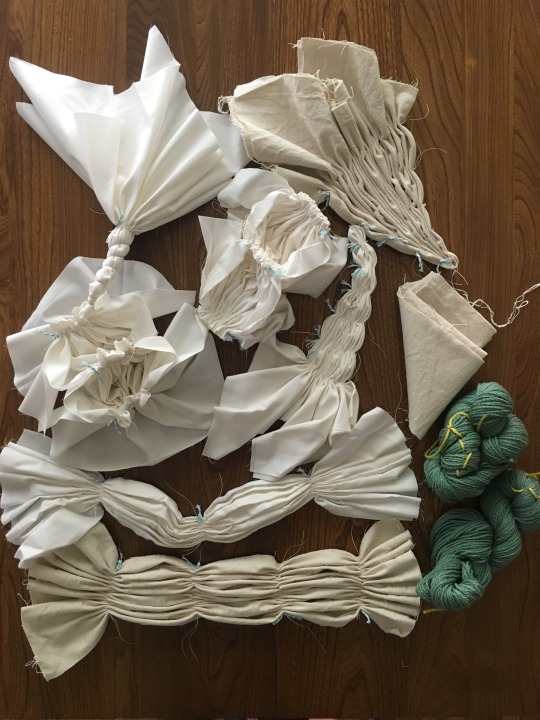
To make the natural indigo vat, I used natural indigo extract, calcium hydroxide thiourea dioxide as a reducing agent. (Side note - I’m using the term “natural indigo” because you can also use “synthetic indigo” and I specifically wanted to try the natural vat.) If you are curious about the details of the indigo recipe I used, you can check out and download lots of great, detailed information from Maiwa Supply Shop.
I collected other supplies over the last month from various stores (mostly Giant Tiger and IKEA, and white buckets from Canadian Tire). I was careful to get only stainless steel, glass or plastic because other materials could react with the dye or alter the process.

I first made the indigo stock solution. It started out pale blue but soon turned bright yellow! (See below). When I added it to the bucket, it turned a pale yellow-green, with a coppery sheen on top – which is apparently how it’s supposed to look.

When I put my first few items in the vat, I wasn’t sure if it would work! I left the items in for about 15 minutes then slowly took them out. They were bright chartreuse coming out, but quickly started turning green, then aqua, then blue. It was amazing!

I did several “dips” in the vat for each piece -letting them sit in the vat for 10 minutes or so, then taking out to let oxidize in between dips. For my canvas, I did 3 dips each, and for the cotton squares I did 4 or 5. I also overdyed some yarn (more on that in another post!)
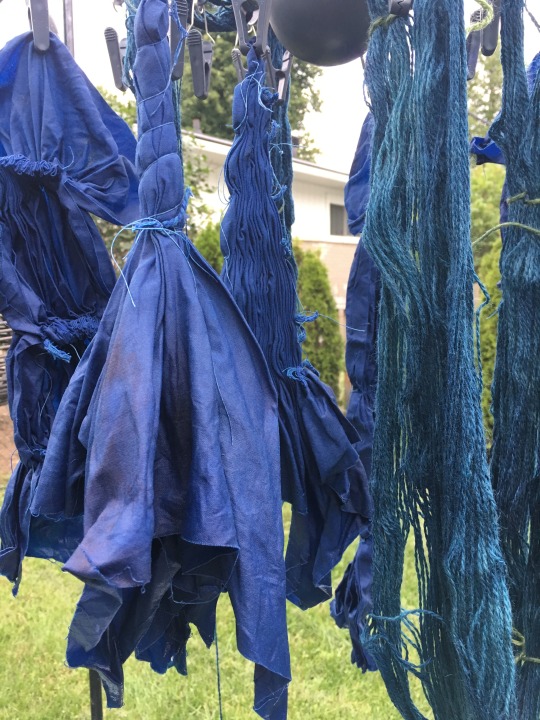
Then, it was the moment of truth - to see the final results! After the last dips, I rinsed the pieces in water, took out the stitching, and rinsed again. I was so pleased with the results and how the shibori stitching turned out! Here are the results from stitched piece to final design!
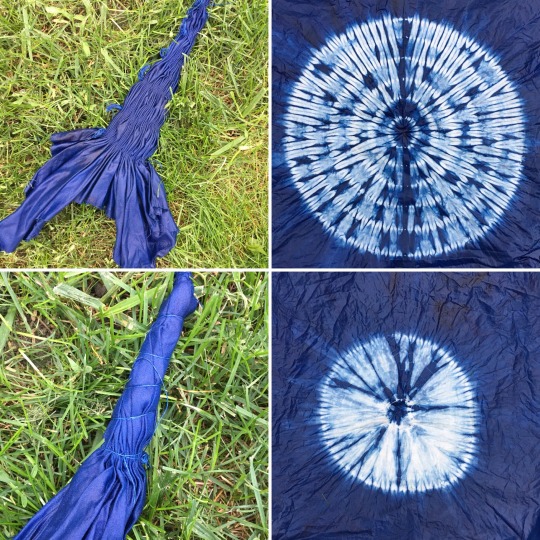
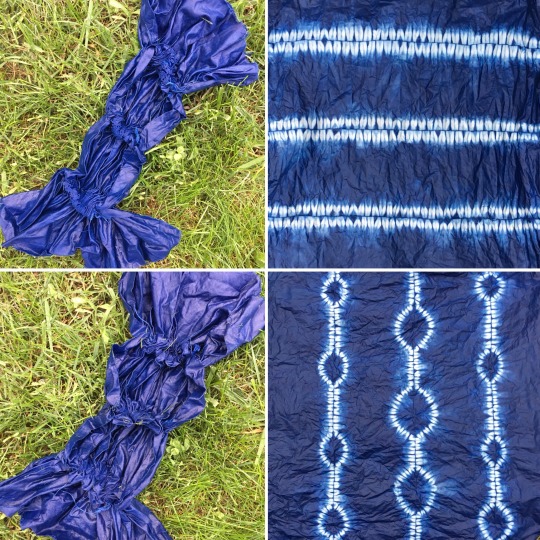

Now that I have all the supplies, I will do indigo dyeing again for sure! This time was definitely a learning process and I know next time I’ll tweak a few things. It’s so fun trying something new!
Shibori stitching: At the cottage last month, I also brought “prepared for dye” fabric that I wanted to stitch up, shibori style. Using “Stitched Shibori” by Jane Callendar as a guide, I tried a few different stitch patterns for different motifs. The book was great in terms of showing technique and methods.
I also read a few library books about natural dyeing, including “The Modern Natural Dyer” by Kristine Vejarand“Natural Colour” by Sasha Duerr and really enjoyed and learned a lot from reading them both. If you have any other books to recommend on natural dyeing, I’d love to hear!
It was lovely to spend a rainy day at the cottage reading and stitching, with Ollie underfoot relaxing, too!
(Note that these are not affiliate links, just sharing some of the books I read! :) )
Post link
I’ve been playing with some new slip colors! Here is a preview of some new work coming soon. I need to try this one out to see how the color of the matcha pops against the polychrome slip finger wipes #chawan #matcha #teabowl #porcelaneousstoneware #cone6oxidation #siliconcarbide #celadon #glaze #cadburycremeegg #floral #koi #shibori #kimono #spring #sprung #potteryporn #minneapolis #minnesota #etsypottery #instapottery #clay #ceramics #pottery (at A-Mill Artist Lofts)
https://www.instagram.com/p/CMe6YhUjaFo/?igshid=ww16vcu32j82
Post link


